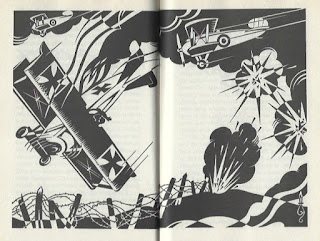Title: Antisocial
Author: Heidi Cullinan
Publication Date: August 8, 2017
Synopsis: A single stroke can change your world.
Xander Fairchild can’t stand people in general and frat boys in particular, so when he’s forced to spend his summer working on his senior project with Skylar Stone, a silver-tongued Delta Sig with a trust fund who wants to make Xander over into a shiny new image, Xander is determined to resist. He came to idyllic, Japanese culture-soaked Benten College to hide and make manga, not to be transformed into a corporate clone in the eleventh hour.
Skylar’s life has been laid out for him since before he was born, but all it takes is one look at Xander’s artwork, and the veneer around him begins to crack. Xander himself does plenty of damage too. There’s something about the antisocial artist’s refusal to yield that forces Skylar to acknowledge how much his own orchestrated future is killing him slowly…as is the truth about his gray-spectrum sexuality, which he hasn’t dared to speak aloud, even to himself.
Through a summer of art and friendship, Xander and Skylar learn more about each other, themselves, and their feelings for one another. But as their senior year begins, they must decide if they will part ways and return to the dull futures they had planned, or if they will take a risk and leap into a brightly colored future—together.
Review: This book absolutely warmed my heart. I fell in love with the story and the characters, and was so happy with the representation in this novel. At the very core, this was a story about being true to yourself and being happy. It tells us that our families are made up of the people who love and support us even if they're not related by blood or law. It tells the reader these truths through the relationship of Xavier and Skylar. These two were adorable and I loved watching them grow as people and grow together as a couple. Heidi Cullinan captured Xavier's passion for art so beautifully and had me aching to see the paintings she described. Just as beautiful was watching Skylar shed his false exterior and accept who he really was. This was my first time reading about a character who falls on the ace/gray spectrum and I hope to read more in the future. I was also drawn into the setting- Benten College, which is absolutely drenched in Japanese culture. Xavier and Skylar's group of friends were charming, and while some were more developed than others, they became family over the course of the book. My favorites were Zelda, a fierce friend of Xavier's from the beginning who is unafraid of anything and Unc, a wonderfully cheerful fraternity brother of Skylar's who was always willing to lend a helping hand. Overall, I absolutely loved this book and hope I get to read more about these characters again someday.
An ARC was provided by the author through NetGalley.
Rating: 5/5 stars
-Kristen ♥
Author: Heidi Cullinan
Publication Date: August 8, 2017
Synopsis: A single stroke can change your world.
Xander Fairchild can’t stand people in general and frat boys in particular, so when he’s forced to spend his summer working on his senior project with Skylar Stone, a silver-tongued Delta Sig with a trust fund who wants to make Xander over into a shiny new image, Xander is determined to resist. He came to idyllic, Japanese culture-soaked Benten College to hide and make manga, not to be transformed into a corporate clone in the eleventh hour.
Skylar’s life has been laid out for him since before he was born, but all it takes is one look at Xander’s artwork, and the veneer around him begins to crack. Xander himself does plenty of damage too. There’s something about the antisocial artist’s refusal to yield that forces Skylar to acknowledge how much his own orchestrated future is killing him slowly…as is the truth about his gray-spectrum sexuality, which he hasn’t dared to speak aloud, even to himself.
Through a summer of art and friendship, Xander and Skylar learn more about each other, themselves, and their feelings for one another. But as their senior year begins, they must decide if they will part ways and return to the dull futures they had planned, or if they will take a risk and leap into a brightly colored future—together.
Review: This book absolutely warmed my heart. I fell in love with the story and the characters, and was so happy with the representation in this novel. At the very core, this was a story about being true to yourself and being happy. It tells us that our families are made up of the people who love and support us even if they're not related by blood or law. It tells the reader these truths through the relationship of Xavier and Skylar. These two were adorable and I loved watching them grow as people and grow together as a couple. Heidi Cullinan captured Xavier's passion for art so beautifully and had me aching to see the paintings she described. Just as beautiful was watching Skylar shed his false exterior and accept who he really was. This was my first time reading about a character who falls on the ace/gray spectrum and I hope to read more in the future. I was also drawn into the setting- Benten College, which is absolutely drenched in Japanese culture. Xavier and Skylar's group of friends were charming, and while some were more developed than others, they became family over the course of the book. My favorites were Zelda, a fierce friend of Xavier's from the beginning who is unafraid of anything and Unc, a wonderfully cheerful fraternity brother of Skylar's who was always willing to lend a helping hand. Overall, I absolutely loved this book and hope I get to read more about these characters again someday.
An ARC was provided by the author through NetGalley.
Rating: 5/5 stars
-Kristen ♥















